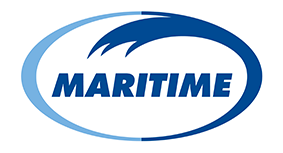Rail Minister officially opens Maritime’s Rail Freight Interchange at East Midlands Gateway
Posted 04 Mar 2020
On Friday 28th February, Rail
Minister, Chris Heaton-Harris MP, joined representatives from Maritime
Transport and SEGRO, and more than 350 guests from across the East Midlands
region and the wider transport and logistics industry to mark the official
opening of the new strategic rail freight interchange at SEGRO Logistics Park
East Midlands Gateway.
The event follows the introduction of the
first dedicated service between East Midlands Gateway and the Port of
Felixstowe which is operated by Maritime Intermodal, a subdivision of Maritime
Transport.
The 17-acre open-access terminal,
capable of handling up to sixteen 775metre-long freight trains daily and
providing storage capacity for over 5,000TEU, is the first to connect to the
Castle Donington freight line, providing direct access to the UK’s network of
rail freight interchanges and all major UK Ports.
Opening ceremony guests included representatives
from global shipping lines, rail freight companies, UK Ports, retailers,
freight forwarders and trusted suppliers. Those in attendance heard speeches
from Chris Heaton-Harris MP, Chairman of the Midlands Engine, Sir John Peace, Maritime’s
Group Executive Chairman, John Williams, and SEGRO’s Chief Executive Officer, David
Sleath. The Maritime Intermodal Two locomotive was also present on the day,
joined by three other locomotives hauled by DB Cargo (UK), GB Railfreight, and Freightliner.
Commenting on the new terminal, Rail
Minister, Chris Heaton-Harris MP, said: ‘The rail freight sector is vital to
the UK, not only supporting economic growth and international transport links,
but driving down emissions by removing around seven million lorry journeys a
year from Britain’s roads. This new Gateway provides direct access to the UK’s
major ports, demonstrating that Britain is open for business and our commitment
to boosting jobs and trade while cleaning up our air.’
‘Opening our new rail terminal at East
Midlands Gateway is an extremely proud occasion for Maritime,’ stated John
Williams. ‘This great facility, thanks to our vision and the vision of SEGRO,
far exceeds the minimum, and we have jointly created a spectacular
fit-for-purpose terminal that will further enable us to offer a full end-to-end
UK logistics solution to our customers. We have seen promising demand already,
and are confident of its success.’
David Sleath, Chief Executive Officer,
SEGRO, said: ‘The new rail freight interchange is a fantastic addition to SEGRO
Logistics Park East Midlands Gateway and makes it a true multimodal ‘in-land’
port which facilitates the efficient and sustainable movement of goods around
the country. We are keen to build on the success of East Midlands Gateway by
continuing to grow our footprint in the Midlands. We have planning consent to
create almost 15 million square feet of industrial or logistics space in the
region in the coming years which will represent around £1billion of further
investment and bring significant long-term benefits for the economy, our customers
and local communities.’
‘Not only will this fantastic facility
transport international goods, UK-wide, and connect to our ports and airports,
but it will play an essential role in our carbon neutrality by allowing us to
move more freight from our congested road network onto the railway,’ said Sir
John Peace, Chairman of the Midlands Engine. ‘The Midlands Engine is working
towards a prosperous future, and it’s essential that we do this on a global
scale, that we reach out to our international partners and that we continue to
trade and export. However, our continued success must be sustainable, and our
growth inclusive. That’s why the work of SEGRO, Maritime Transport, and the Midlands
Engine is so important.’
East Midlands Gateway is Maritime’s
fifth rail terminal to date. It utilises resources consisting of three loaded
reach stackers and two empty container handlers to ensure quick turnaround
times, and will eventually host a three-storey, 20,000 sq. ft. headquarters for
Maritime Intermodal to house operations staff, state-of-the-art training
facilities, and parking for a fleet of up to 100 trucks.


